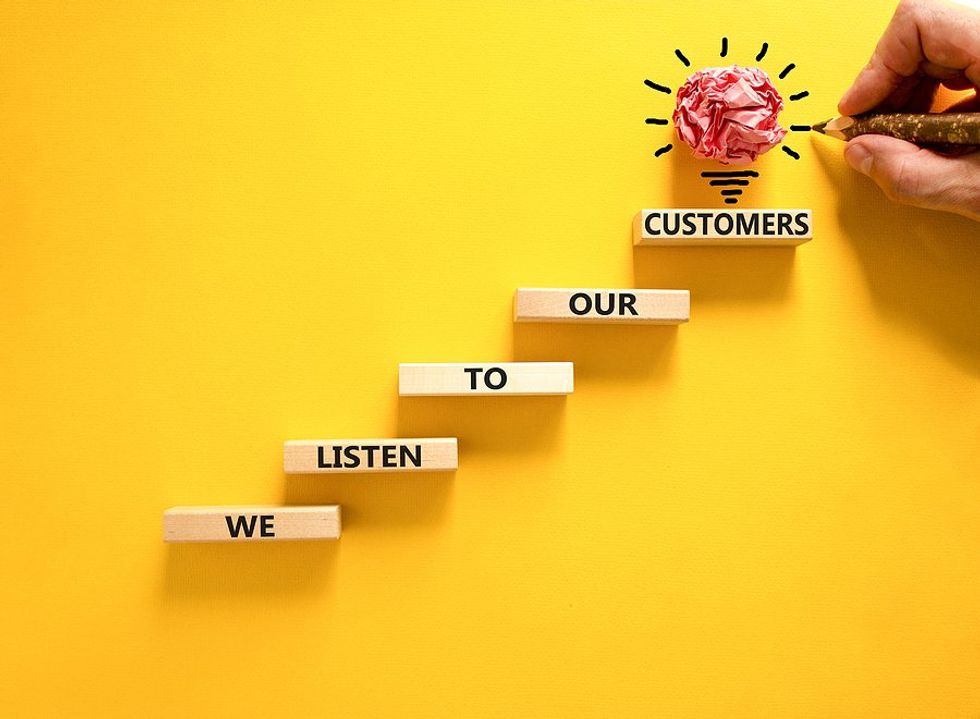
In today's world, digital technologies have transformed how brands operate and interact with customers. With the rise of social media, mobile devices, and other digital channels, it has become imperative for brands to have a strong online presence and engage with their customers meaningfully. Brands that navigate the digital landscape successfully can reach a wider audience and build stronger customer relationships.
In this context, brands must understand the key factors contributing to digital success. Here are five ways brands can succeed in the digital world.
Traditional Marketing vs. Digital Marketing
Brands need to be aware of some key differences between traditional and digital marketing strategies to succeed in the digital world. The first thing to recognize is it's no longer a traditional vs. digital marketing world. It's all about being customer first and knowing how they (in their segment) journey through your brand, regardless of what touchpoint they enter. It's about multi-touchpoint marketing and how you drive them across the marketing funnel—from brand awareness to consideration to conversion to loyalty and advocacy.
It's no longer a linear journey. Consumers may come in at any touchpoint. It also realizes that brands are playing the role of conductor. How are you measuring the effectiveness of each channel and then optimizing your results to achieve your goal? Finally, it's a balance between a brand's owned, earned, and paid media.
Personalization

Bigstock
Personalization is important in today’s digital landscape, and there are some effective ways to tailor marketing messages and content to individual customers. The first thing is to break out your data into customer segments and understand their needs (and the benefits your brand can bring them) and then how they consume media / what channels they are on and everything about them so that you can present your brand as a solution to fit their needs. Then create personalized messaging, content, and offers per segment.
For example, in broad strokes, older audiences will be on Facebook and reading emails, while a younger demographic will typically be on TikTok and Instagram, viewing YouTube Shorts, and getting their marketing messages via opting into SMS text messaging.
Build Trust & Credibility

Bigstock
In the digital world, building trust and credibility is essential for brands to succeed. However, it can also be one of the biggest challenges they face. One of the main obstacles is the abundance of fake news, misinformation, and online scams that can damage a brand's reputation. Another challenge is the lack of face-to-face interactions, which can make it harder for customers to trust a brand. Additionally, there is the issue of data privacy, with many customers being concerned about how their personal information is being used.
To overcome these obstacles, brands need to be transparent and honest in their communications and actions, provide quality products or services, and prioritize customer satisfaction. They can also leverage social proof, such as user reviews and testimonials, to build credibility and trust. Moreover, brands should establish a strong online presence and engage with customers regularly through social media and other channels to foster a deeper connection and build a community of loyal customers.
Social Listening

Bigstock
Social listening has become a critical component of any brand’s digital strategy. It is important for brands and is often overlooked, even though there are a lot of lower-cost social media management tools that now offer social listening for a fee. Social listening can help brands see what social conversation is happening (and trending) about their brand globally and nationwide. Consistent social conversation volume can help drive brand awareness. Social listening can also help you discover influencers talking about your brand, and you can reach out to them for influencer campaigns/partnerships.
A second way you can use social listening is for customer service. You can see customers discussing issues about a product or if they’re unhappy with a brand. You can respond with corporate communications as needed to customers or use the information to inform your product development and marketing teams. You can also use it for crisis management. I remember being at a Fortune 500 brand, and a licensee had changed the interface of a popular game. Social listening had picked up the noise of angry fans coming to the corporate office to protest. Because we picked this up with our social listening tool, we triggered a corporate crisis plan immediately, and it defused the situation.
Lastly, you can use social listening for real-time analytics at conferences or events. For example, I ran the social media war room for a major gaming brand at E3 (the Electronic Entertainment Expo). We picked up consumer sentiment on the games and gaming platforms in real time and were able to flex our marketing/PR events and communications in real time to react to our competitors' messaging.
Data & Analytics

Bigstock
Data and analytics have become essential for brands to understand their customers, track their marketing ROI, and optimize their campaigns for maximum impact. Brands can leverage data and analytics in several ways to better understand their customers and improve their marketing efforts.
First, brands can use data analytics to track customer behavior and preferences across multiple channels, such as social media, email, and website interactions. By analyzing this data, brands can identify patterns and trends in customer behavior, preferences, and sentiment toward their brand. This can help brands develop more targeted, personalized marketing campaigns that resonate with their customers.
Second, data analytics can help brands measure the effectiveness of their marketing campaigns and track their return on investment (ROI). By analyzing metrics such as website traffic, conversion rates, and sales, brands can determine the most effective campaigns and make data-driven decisions to optimize their marketing spend.
Finally, data analytics can help brands optimize their campaigns for maximum impact. Using A/B testing and other analytical techniques, brands can test different campaign strategies and optimize their messaging, targeting, and creativity to improve engagement and conversions.
In conclusion, the digital landscape provides vast opportunities for brands to connect with their audiences and achieve their marketing goals. By staying attuned to customer feedback, personalizing messaging, leveraging data and analytics to optimize their campaigns, and prioritizing transparency and authenticity, brands can establish a strong digital presence and drive meaningful results. The digital world is constantly evolving, but by keeping these key strategies in mind, brands can stay ahead of the curve and thrive in the digital age.
For a step-by-step guide on how to develop a brand strategy, check out How to Develop a Brand Strategy by Lisa Perry. For more digital marketing insights, follow Dana Long and Lisa Perry.
This article was written by Lisa Perry and Dana Long.
- 4 Fastest-Growing Marketing Job Titles & What It Means For The Workforce ›
- Identify The Heart & Soul Of Your Brand Through Your Brand Essence ›
- Why A Brand Architecture Matters ›

 Bigstock
Bigstock Bigstock
Bigstock Bigstock
Bigstock


